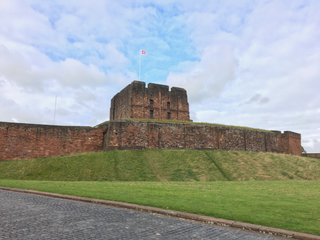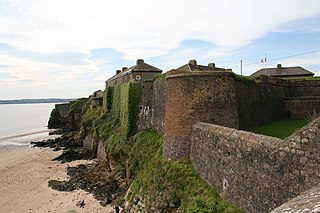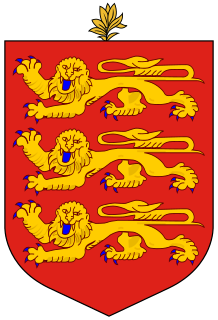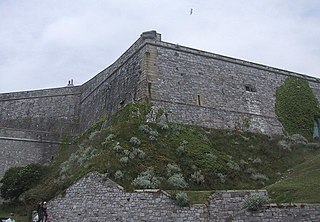 W
WCarlisle Castle is situated in Carlisle, in the English county of Cumbria, near the ruins of Hadrian's Wall. The castle is over 900 years old and has been the scene of many historical episodes in British history. Given the proximity of Carlisle to the border between England and Scotland, it has been the centre of many wars and invasions. During the Jacobite Rising of 1745-6, Carlisle became the last English fortress to undergo a siege. The castle was listed as a Scheduled Ancient Monument on 7 August 1996.
 W
WCarrickfergus Castle is a Norman castle in Northern Ireland, situated in the town of Carrickfergus in County Antrim, on the northern shore of Belfast Lough. Besieged in turn by the Scottish, native Irish, English and French, the castle played an important military role until 1928 and remains one of the best preserved medieval structures in Northern Ireland. It was strategically useful, with 3/4 of the castle perimeter surrounded by water. Today it is maintained by the Northern Ireland Environment Agency as a state care historic monument, at grid ref: J4143 8725.
 W
WCharlemont Fort was a garrison situated in Charlemont, County Armagh.
 W
WThe Lord Warden of the Cinque Ports is a ceremonial official in the United Kingdom. The post dates from at least the 12th century, when the title was Keeper of the Coast, but may be older. The Lord Warden was originally in charge of the Cinque Ports, a group of five port towns on the southeast coast of England that was formed to collectively supply ships for The Crown in the absence at the time of a formal navy. Today the role is a sinecure and an honorary title, and fourteen towns belong to the Cinque Ports confederation. The title is one of the higher honours bestowed by the Sovereign; it has often been held by members of the Royal Family or prime ministers, especially those who have been influential in defending Britain at times of war.
 W
WDeal Castle is a defensive artillery fortress in Deal, Kent, England, which was built in 1540 by order of Henry VIII. The successive Captains of Deal Castle originally commanded a garrison based at the fortress, initially from quarters within the keep but later from purpose built quarters in a block between the keep and the outer wall. The accommodation block was demolished and rebuilt in 1802 and demolished a second time in 1943 following enemy action during the Second World War.
 W
WDumbarton Castle has the longest recorded history of any stronghold in Scotland. It overlooks the Scottish town of Dumbarton, and sits on a plug of volcanic basalt known as Dumbarton Rock which is 240 feet (73 m) high.
 W
WThe Governor of Duncannon Fort was a military officer who commanded the garrison at Duncannon in County Wexford. In later years the post became a sinecure and was abolished on the death of the last holder in 1835.
 W
WThe Bailiwick of Guernsey is a British crown dependency off the coast of France.
 W
WThe Lieutenant Governor of Jersey is the representative of the British monarch in the Bailiwick of Jersey, a Crown dependency of the British Crown.
 W
WThe Governor of Northern Ireland was the principal officer and representative in Northern Ireland of the British Monarch. The office was established on 9 December 1922 and abolished on 18 July 1973.
Sir John Killigrew of Arwenack, near Penryn, Cornwall, was the 2nd Governor of Pendennis Castle, (1568–1584) appointed by Queen Elizabeth I, as stated on his father's brass in St Budock's Church. He was MP for Lostwithiel in 1563 and twice for the family's pocket borough of Penryn, in 1571 and 1572. Although appointed a commissioner to enquire into piracy, he was himself a notorious pirate and smuggler. He was described as a man "who might sometimes keep within the law, but only out of fear of punishment".
 W
WThe Governor of Plymouth was the military Captain or Governor of the Fortress of Plymouth. The Governorship was abolished in 1842. The Lieutenant Governorship was vested in the General Officer Commanding Western District from 1793 to 1903, and in the Officer Commanding Plymouth Garrison from 1903 until that post was abolished.
 W
WThe Governor of Portsmouth was the Constable of Portchester Castle from the 13th Century to the reign of Henry VIII. Since then Portsmouth had its own military Captain or Governor, who was based in the Square Tower built in Old Portsmouth in 1494 as part of the fortifications to protect the rapidly expanding naval port. The Coats of Arms of former Governors of Portsmouth are displayed on the walls of the Square Tower's Lower Hall. In 1540, the Hospital of St. Nicholas, suitably converted and modernised, became the military centre of the town. Its Domus Dei, now the roofless Royal Garrison Church, became the residence of the Captain or Governor. The Governorship was abolished in 1834.
 W
WRoss Castle is a 15th-century tower house and keep on the edge of Lough Leane, in Killarney National Park, County Kerry, Ireland. It is the ancestral home of the Chiefs of the Clan O'Donoghue, later associated with the Brownes of Killarney.
 W
WThe Isles of Scilly are an archipelago 25 miles off the southwestern tip of Cornwall, England. The principal islands are St Mary's, Tresco, St Martin's, St Agnes and Bryher. The skerry of Pednathise Head is the most southerly point in the United Kingdom, being 6 5⁄8 miles further south than the most southerly point of mainland Great Britain at Lizard Point.
 W
WThe Constable of the Tower is the most senior appointment at the Tower of London. In the Middle Ages a constable was the person in charge of a castle when the owner—the king or a nobleman—was not in residence. The Constable of the Tower had a unique importance as the person in charge of the principal fortress defending the capital city of England.